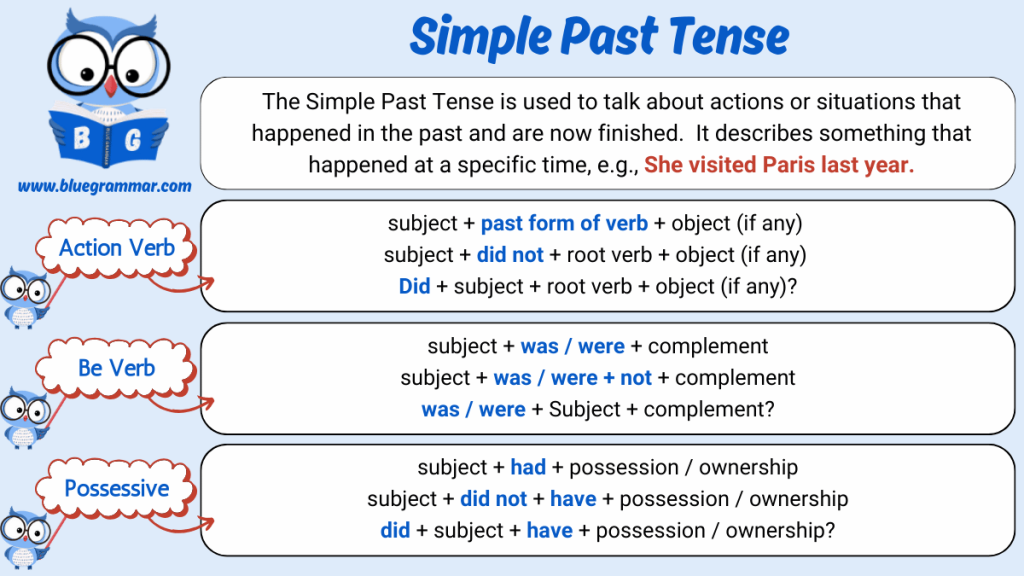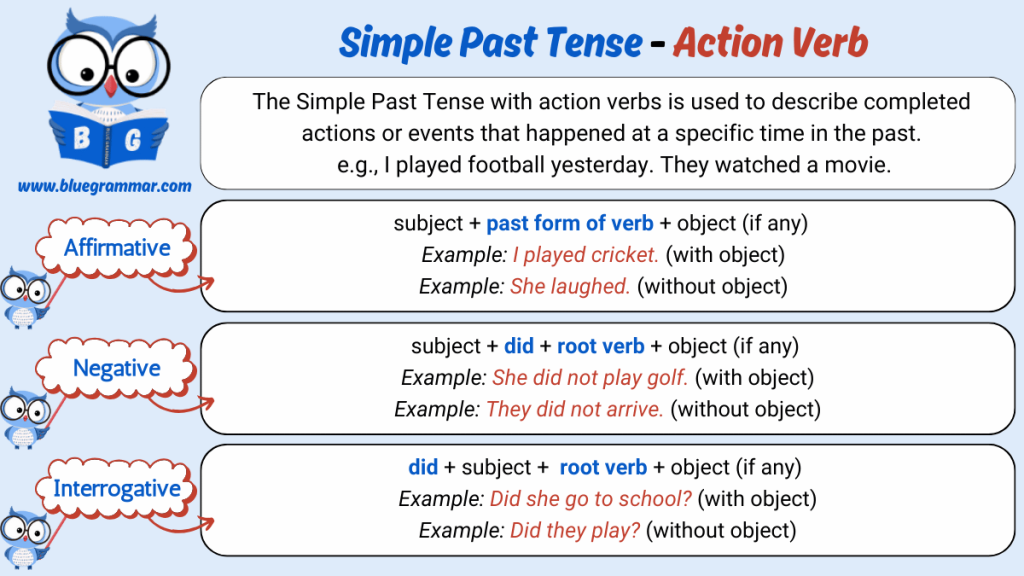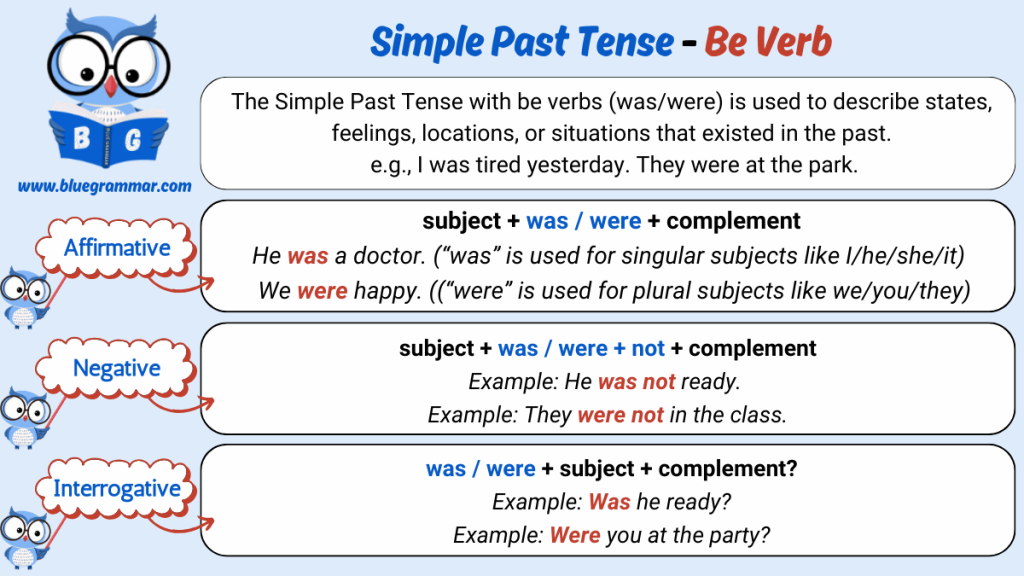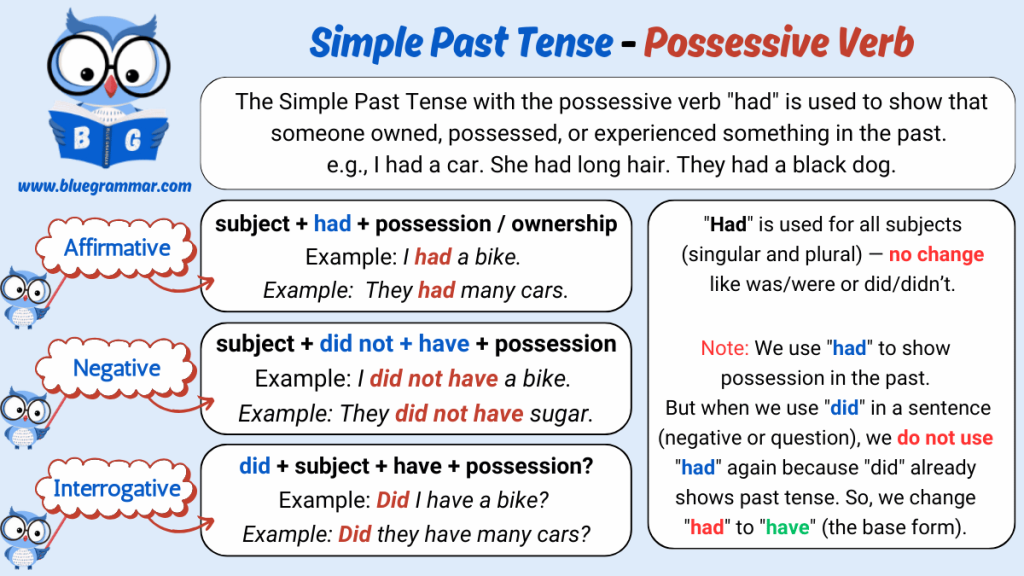
The simple past tense is used to talk about actions or situations that were completed in the past. It often refers to a specific time in the past, such as yesterday, last night, last year, two days ago, in 2005, or when someone was a child.
Simple Past Tense : Action Verb
Why we use action verbs in simple past tense?
Action verbs describe something that a person, animal, or thing does. In the simple past tense, action verbs are used to express completed actions that took place at a particular time in the past. These actions are over and done with. We use them to talk about activities or events that happened once, repeatedly, or over a period of time in the past.

Structure for affirmative sentences:
Subject + past form of action verb + object (if any)
Examples:
- She watched a movie last night.
- They played football in the park.
- I studied for the exam yesterday.
Structure for negative sentences:
Subject + did not + base form of action verb + object (if any)
Examples:
- She did not watch the movie.
- They did not play football.
- I did not study for the exam.
Structure for interrogative sentences:
Did + subject + base form of action verb + object (if any)?
Examples:
- Did she watch the movie?
- Did they play football?
- Did you study for the exam?
Simple Past Tense : Be Verb
Why we use be verbs in simple past tense?
Be verbs (was and were) are not action verbs. They are used to show a state, condition, identity, or location in the past. These verbs help us describe how someone or something was in a certain situation or place. Be verbs are essential when we talk about feelings, existence, age, time, or characteristics in the past.

Structure for affirmative sentences:
Subject + was / were + complement
Examples:
- I was tired last night.
- She was at home.
- They were happy after the exam.
Structure for negative sentences:
Subject + was / were + not + complement
Examples:
- I was not tired.
- She was not at home.
- They were not happy.
Structure for interrogative sentences:
Was / Were + subject + complement?
Examples:
- Was she tired?
- Were they at the station?
- Was it cold last night?
Simple Past Tense : Possessive Verb
Why we use had in simple past tense?
“Had” is used in the simple past tense to show possession or ownership. It is the past form of “have” and “has.” We use “had” to talk about what someone owned, possessed, or experienced in the past. This includes physical possessions, relationships, illnesses, or abstract concepts like ideas and plans. It is a useful verb when we want to describe what was in someone’s possession at a certain time in the past.

Structure for affirmative sentences:
Subject + had + possession or relationship
Examples:
- I had a bicycle when I was a child.
- She had a lot of books.
- They had a plan to travel.
Structure for negative sentences:
Subject + did not + have + possession or relationship
Examples:
- I did not have a bicycle.
- She did not have many books.
- They did not have a plan.
Structure for interrogative sentences:
Did + subject + have + possession or relationship?
Examples:
- Did you have a bicycle?
- Did she have any books?
- Did they have a plan?